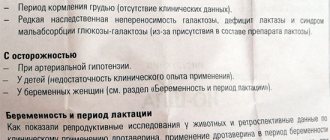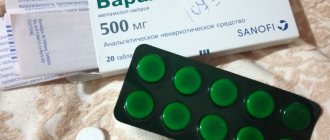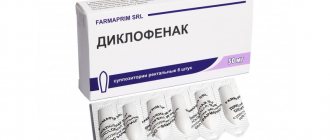Does analgin help with toothache?
In many countries, analgin is prohibited.
Due to its affordable price, the drug has been actively used for almost a century, in particular to relieve toothache. However, after research, some countries added Analgin to the list of prohibited drugs . These are Australia, Japan and Sweden.
This decision is due to the ability of the drug to affect the level of white blood cells, which makes the body unprotected against infectious diseases. The risk of developing pathology increases not only after long-term use of Analgin, but also as a result of taking a single dose.
In Russia and the countries of the former Soviet Union, Analgin has not lost popularity. It is still available and available at any pharmacy without a prescription. The drug is mainly used to relieve symptomatic manifestations: pain and increased body temperature.
The drug helps, but it is unlikely that it will be possible to completely eliminate toothache with the help of Analgin. The anesthetic can help reduce the intensity of symptoms. Modern means are much more effective in this regard.
After taking the drug, the pain dulls after 20-30 minutes. The duration of action of the anesthetic is up to 2-3 hours.
Based on the above facts, we can conclude that Analgin can be taken for mild toothache and taken only in the absence of contraindications.
Titles
The international name of analgin is metamizole sodium. The drug is produced under hundreds of different names, but since the pharmacological industry of all CIS countries produces inexpensive analgin of excellent quality, knowledge of all these synonyms is not at all necessary.
We suggest you read: What you need to know if you have stitches after tooth extraction | Surgery
However, at the pharmacy, for a substantial fee, they may well recommend you a luxurious painkiller in beautiful packaging. Next to a beautiful name, for example, “toralgin” or “nebalgin”, or, even cooler, “dipiron”, you will find small and inconspicuous Latin letters - metamizole sodium or metamizole natricum - this will mean that you bought the most ordinary analgin (bought, in short).
The only, but very relevant exception is analgin in suppositories, which often appears on sale under the name “spazdolzin”.
Composition, active ingredient and principle of action
Analgin will only help with mild toothache.
The anesthetic is based on metamizole sodium. Due to the properties of the active substance, the drug has an anti-inflammatory and antipyretic effect, eliminates mild pain .
For better absorption of the active component, the composition includes: calcium stearate, powdered sugar, potato starch, talc.
The formula of the product blocks prostaglandins, which reduces pain. But it will not be possible to completely get rid of them; drugs developed on the basis of metamizole sodium are not able to relieve severe pain.
The drug works according to the following principle:
- the active substance creates a barrier to the passage of impulses along nerve endings (mainly Burdach and Gaulle bundles);
- helps to increase the sensitivity threshold;
- regulates heat transfer;
- stops the development of the inflammatory process (weak effect).
Metamizole sodium is decomposed in the liver, and breakdown products are excreted through the kidneys.
Analogs
Since taking the drug has serious complications for the body, it is not considered effective. To relieve pain, it is better to use less dangerous drugs. However, there are several complicating points:
- Most of them are available by prescription, which means you will definitely have to visit a doctor.
- The cost is an order of magnitude higher.
The table shows popular analogues indicating their effectiveness and approximate cost.
| Analogue name | Efficiency | Cost, rub. |
| Ketanov | The active ingredient is ketorol tromethamine. It has analgesic, anti-inflammatory, and minor antipyretic effects. The effect is the inhibition of COX, an enzyme compound responsible for the conversion of arachidonic acid. | Pack of 10 tablets. – about 100, 10 ampoules – 170 |
| Dolak | The composition and mechanism of action are similar to the previous drug. Shows a pronounced analgesic, anti-inflammatory, antiaggregation and relative antipyretic effect. | Pack of 20 tablets. costs from 110, solution – from 140 for 10 ampoules. |
| Nise | The main component is nimesulide. Shows analgesic, anti-edematous, antipyretic effects. Inhibits the synthesis of prostaglandins and the process of platelet fusion. | Price per pack of 20 tablets. – starts from 230. |
| Ketorol | The active substance is ketorol tromethamine. It has anti-inflammatory, analgesic and antipyretic effects. Stops the activity of COX, which catalyzes the synthesis of prostaglandins. | The cost of a pack of 20 tablets. – from 100, solution – from 180. |
| Naproxen | The active ingredient is naproxen sodium. Has anti-inflammatory, decongestant and analgesic effects, partial antipyretic. Reduces cyclooxygenase activity. | Pack of 20 tablets. costs about 160. |
Every year, the pharmaceutical industry produces new painkillers. Their line is quite wide, but despite this, Analgin remains the most popular among them, and does not lose its position in the popularity ranking.
In the video, a specialist explains how else you can relieve toothache.
Indications for use for toothache
Analgin powder destroys tooth enamel. As a last resort, you can dilute it with a small amount of water to a paste and apply it to the gum near the sore tooth.
Analgin was developed as an anesthetic and has been used for decades to relieve pain, particularly for dental problems. The drug is appropriate to use for the following dental problems:
- tooth decay due to progressive caries;
- the presence of chips and microscopic cracks in the enamel;
- inflammation in the area of the tooth root or gum;
- pulpitis;
- cystic formation;
- infection.
You should not apply crushed Analgin tablet powder to the causative tooth. The acidic environment of the product has an aggressive effect on the enamel structure. Prolonged contact will not end in pain relief, but in the formation of a hole on the crown of the tooth, especially if there were microcracks or carious damage on it.
What are the alternatives to pain pills?
Pregnant women should take any alternative to pills only after consulting a doctor. How can you help when a pregnant woman has a toothache:
- In dental practice, dental drops based on camphor, peppermint oil and valerian tincture are used. Their action is complex - analgesic, anti-inflammatory and antiseptic. A swab soaked in a solution of dental drops is applied to the diseased tooth. You need to keep it for about 10 minutes;
- rinsing with furatsilin solution is another option for numbing a pregnant woman’s tooth. One tablet of medicine is dissolved in a glass of water. You need to rinse your mouth several times during the day, for 4 to 5 minutes;
- two more medications for relieving toothache - Miramistin and Chlorhexidine. Local use of drugs does not harm the woman and her unborn baby. In the form of solutions, these products are used for rinsing. Antiseptics are also available in the form of sprays. But it is unsafe to use these medications for more than 10 days in a row;
- You can reduce pain in the tooth with a solution of novocaine (especially if acute pain occurs). You need to moisten a swab with the medicine and apply it to the tooth or drop the solution onto the sore gum;
- in some cases, pain can be relieved with gels that help children when teething - Dentinox, Kalgel, Kamistad. They have a freezing effect.
We invite you to read: How to treat gumboil - what to rinse with to relieve swelling at home
ATTENTION! What you can do to numb a pregnant woman’s tooth should be recommended by your doctor. You should not prescribe any medications, including alternative ones, on your own. Everyone's sensitivity to medications is different, and uncontrolled use can be harmful.
Instructions for use and dosage for toothache
Analgin injections are more effective for toothache.
Analgin is used to relieve pain due to dental diseases. There are several ways to take the drug:
- internal administration of the tablet drug;
- applying crushed tablets to the causative tooth, under the tongue;
- injection;
- installation of candles (suitable for children).
In the first case, it is enough to take the tablet with a glass of water. You can drink it whole or crush it with your teeth. Complete dissolution of the drug occurs in the stomach. After 20-30 minutes, the active substance penetrates the blood, after which the expected effect occurs.
The powder can be applied to the crown of the tooth , which also gives an analgesic effect, but it does not last long (about 30-40 minutes). To achieve longer-lasting anesthesia, it is recommended to combine local anesthesia with powder and oral tablets. Instead of a pill, you can use an injectable form of the medicine. To avoid damage to the enamel by the acidic environment of Analgin, the powder is diluted with a drop of water and carefully placed on the gum around the diseased tooth or under the tongue. The absence of contact with the crown makes the product safe to use.
Intramuscular injections provide quicker and more effective results , however, not everyone knows the technique of injecting the drug with a syringe. Yes, and it is difficult to calculate the dosage in each individual case, especially when it comes to small patients.
The dosage regimen must be strictly observed due to the fact that the active substance of the drug has a negative effect on all vital systems of the body. The maximum dose of Analgin for toothache is 4 tablets (for adults). The medicine in ampoules is administered 2-3 times a day, 250-500 mg.
In addition to the intramuscular option, intravenous is used, in which a single dose is 500 mg - 1 g. The rate of administration should be weak, not exceeding 1 ml per minute. In this case, the patient must take a “lying” position, and specialists must constantly monitor blood pressure and heart rate.
The pediatric dose is calculated taking into account the child’s weight: 5-10 mg is needed for each kg, dosage regimen is 2-3 times a day.
Tablets are only a temporary solution
The principle of action of the analgesic is the relief of pain signals that go from the affected areas to the brain, therefore Analgin is effective for toothache. But pain that has disappeared for a while does not mean complete healing; the body continues to need serious therapy. With repeated use of painkillers, the destructive processes are irreversible, as a result of which the patient will need long-term and expensive treatment.
- Can toothache radiate to the temple?
- What to do if your tooth hurts badly? Remedies for toothache
- For toothache, ketorolac
- Corvalol for toothache
Contraindications
The anesthetic drug has an impressive list of contraindications, so before use you should familiarize yourself with them in order to avoid an allergic reaction of the body and deterioration of health.
Among the main restrictions:
- age factor (the drug is recommended for children starting from one year);
- bronchial diseases;
- presence of aspirin-induced asthma;
- any digestive tract disorders;
- peptic ulcers of the stomach, intestines;
- blood problems (leukemia, anemia);
- disorders of the kidneys and liver;
- allergy to the constituent substances of the product.
Use for children and pregnancy
Analgin in suppository format for children.
For toothache in children, Analgin is rarely prescribed. If the medicine is recommended for use, then for children from 1 to 3 years old the dosage per dose is 50-100 mg, from 4 to 7 years old - 100-200 mg, from 8 to 14 years old - 250-300 mg .
For infants, the drug can be injected, but only into the muscle. Before the procedure, the ampoule is warmed up to body temperature; the rate of release of the product from the syringe should be low.
There are several forms of release of Analgin; in addition to tablets and injections, you can buy suppositories at the pharmacy that are designed specifically for young patients. After installing the suppository, the child should take the “lying” position. Recommended dosages:
- from 6 months to a year – 100 mg;
- from one to 3 years – 200 mg;
- from 3 to 7 years – 200-400 mg;
- from 8 to 14 years – 200-600 mg.
Any medications during pregnancy and breastfeeding are undesirable; before deciding to take them, you should evaluate all the risks.
The drug has many contraindications and can cause side effects. If a woman is diagnosed with diseases listed in the list of restrictions, pregnant women should refuse to take it.
The consequences of ignoring instructions can be serious, including anaphylactic shock. Especially considering that one dose is enough for side effects to appear.
When taking an anesthetic in a therapeutic dosage, penetration of the active substance into breast milk is observed. This indicates that the anesthetic should not be used during lactation. Sometimes local application is allowed (under the tongue or on the gum).
Precautionary measures
When considering whether Analgin helps with toothache, you should consider the list of side effects that a patient taking this medicine may experience. For toothache, it is preferable to use Analgin tablets: they are taken orally in accordance with the dosage indicated in the instructions or, dissolved in warm water, applied directly to the diseased tooth.
An unpleasant consequence of using Analgin for pain is agranulocytosis - this is an abnormal phenomenon associated with a sharp decrease in the level of neutrophils in the blood and, as a consequence, leading to the body’s vulnerability to viral and bacterial infections. As a rule, agranulocytosis is a side effect of prolonged or incorrect use of the drug, but it happens that similar symptoms occur after taking 1 tablet per tooth.
This disease primarily manifests itself as characteristic changes in the oral cavity. Subsequently, the patient who visited the dentist complains of increased body temperature, dysphagia, bad breath, and bleeding gums. Visually, hemorrhages (large and small bruises) are noticeable on the mucous membrane; foci of necrosis may occur on the tonsils or in other areas.
Next, the ulcerative-necrotic process “descends” along the esophagus, pus and symptoms of inflammation are absent, since the reduced level of neutrophils in the blood “inhibits” this kind of reaction in the body. Upon palpation, the patient reveals lymphadenitis (the submandibular lymph nodes are enlarged in size), and discharge characteristic of candidiasis (cheesy white flakes) may be present on the oral mucosa.
An injection or taken Analgin tablet can also cause other side effects:
- allergic reactions (up to Quincke's edema);
- hypotension;
- anuria and other malfunctions of the kidneys.
An overdose of Analgin can lead to the appearance of symptoms of general intoxication of the body - nausea, vomiting, weakness, confusion. In this case, it is necessary to thoroughly rinse the stomach and take sorbents or laxatives. It is important to remember that the combination of Analgin with contraceptives, antidepressants, and other analgesics increases its side (toxic) effects.
Advantages and disadvantages of analgin for toothache
The anesthetic has the following advantages:
- affordable price, can be purchased without problems in almost every pharmacy;
- relieves mild combat symptoms;
- different forms of release of the drug Analgin allow you to choose the most suitable option for pain relief;
- the effect comes quickly enough, it only takes about half an hour;
- has an antipyretic effect, which is important in cases where toothache is accompanied by elevated body temperature.
The drug Analgin also has disadvantages, and they are quite significant. This is an aggressive effect on the human body, tooth enamel, if direct contact is allowed. In addition, it is not rational to use the product for severe pain; there will be no effect . During the research, it was revealed that taking Analgin is accompanied by side effects. Therefore, in several countries the medicine is available exclusively by prescription, while in others it has been completely abandoned.
Karina
March 12, 2020 at 11:59 am
I don’t understand why many people drink this Analgin when many modern and highly effective pain remedies have already been invented... For example, Nise, Nimulid, Ketanov. These remedies relieve pain for 12 hours, even any pain, even the most terrible one. They are even drunk to relieve pain after surgery on the jaw. And these drugs are no more harmful than Analgin, and one Nise tablet is certainly safer than two Analgin. Any smart person understands this.
Price
Analgin has an affordable price; it is almost always available in pharmacies and is available without a prescription. For packaging you will have to pay from 12 rudders.
If for some reason it is not possible to take an Analgin tablet, then it can be replaced with another drug of a similar effect.
| How to replace Analgin | |
| Name | Price, rubles |
| Andipal | 28 |
| Mixigan | 35 |
| Piralgin | 47 |
| Pentalgin | 96 |
| Baralgin | 172 |
| Revalgin | 25 |
Typical examples
- Baralgin (renalgan, maxigan, spazgan, trigan, spazmalgin) is a combination of analgin and two other drugs that eliminate spasms of muscles and blood vessels.
- Tempalgin is analgin combined with the sedative tempidine.
- Pentalgin is the famous five-wheeler. Caffeine, the narcotic analgesic codeine and the sedative phenobarbital are added to the analgin.
The attentive reader will notice that the five-part structure has not 5 components, but only four. This is due to the fact that previously pentalgin also included amidopyrine.
Amidopyrine is a drug in all its effects and chemical structure very similar to analgin, but the severity of its side effects is noticeably higher, this is especially manifested in the toxic effect on the hematopoietic system. This is why amidopyrine is no longer used in most countries, including ours.










